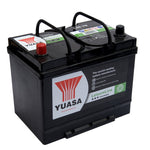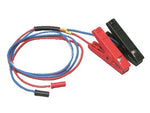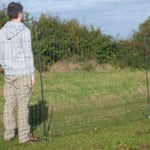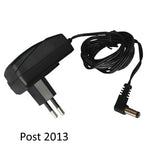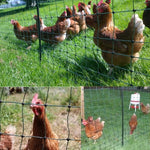You have no items in your shopping cart.
What is an Electric Fence?
- How Does an Electric Fence Work?
- What is the effect of Electric Current on an Animal?
- Is an Electric Fence Dangerous?
- What Happens if a Child Touches it?
- What if a Dog Touches it?
- How Much Energy does an Energiser use?
- May I Install an Electric Fence Myself?
Will a Netting System Work off a Battery?
Connecting the net to a normal 12 volt battery on its own will not supply sufficient energy to power the fence and will not work. The 12 volts needs to be increased to 5-6000 volts by an energiser. Similarly connecting it directly to a 220 volt mains outlet will create a very dangerous system as it will be charged with 13 AMPS which is very dangerous. A normal energiser works at 15 - 500 MILLIAMPS. How is the Net made safe?
How Does an Electric Fence Work?
Whether it is a Netting System or a standard Stock Fence the principals remain the same.
An Electric Fence consists of an open electrical circuit comprising of two arms.
1/. The first arm is the fence connected to the power terminal of the Fence energiser. This section must be totally insulated from any other conductive material (ground, leaves, grass, trees, metal or brick) by plastic insulators or an air gap of at least 3cm. It does not have to loop back on itself and may be a single line away from the energiser.
2/. The second arm is the ground itself that is connected to the Earth terminal of the energiser by way of the earth stake/post.
This then leaves an OPEN electrical circuit (as shown in the diagram) waiting for an errant animal to close it

The Electrical circuit is then CLOSED when the animal (as shown in the diagram) touches both the live fence AND the ground at the same time. This allows the electricity (electrons) to flow from the fence down to the ground through the target animal and back to the energiser via the earth stake giving the animal an electrical shock as it touches the wire.

What is the effect of Electric Current on an Animal?
When an animal touches the electrical wire, it causes a muscle contraction in the animal that is similar to what humans feel as a muscle cramp. With a continuous supply of current as you get with mains electricity this results in the grabbing effect that is so dangerous as the victim is unable to release the source of the current. With the pulsing of an electric fence this cramping is transitory and the victim is able to retreat from the source of energy. The animal will associate this unpleasant feeling with touching the fence and will be discouraged from touching it again in the future. Thus it is not that the fence causes physical injury to the animal, but rather that it acts as a learning tool to prevent it from happening again.
-
Pain: Electric shocks from these fences cause a sharp, stinging pain at the point of contact. The intensity of the pain can vary depending on the voltage of the fence.
-
Muscle contractions: The shock can cause involuntary muscle contractions, these are short lived due to the pulsing nature of the fence
-
Tingling or numbness: After touching an electric fence, the animal experience tingling or numbness in the affected area due to the disruption of nerve signals.
-
Psychological impact: The surprise and pain of an electric shock is invariably psychologically effective, leading to anxiety or fear of approaching the fence again.
Is an Electric Fence Dangerous?
No, an electric fence is not dangerous. The voltage being sent through the wires is high, but the current or amplification (amps) is very low. A 220-volt shock will hurt just as much as a 10,000-volt shock, as long as the current or amps are the same. Amps are what kills. Electric fence energisers put out high voltage (around 8,000 volts), but very low amperage or current (around 120 milliamps). This is 120-thousands of an amp. It should not even kill a squirrel.
This output is made safe in two ways, firstly by releasing the flow of electrons from the capacitor in regular pulses of high voltage but very low amperage. The amperage component of the electrical charge is greatly reduced to figures in the range of 15 - 500 milliAmps. (The majority of units operate in the 100-150 milliAmp range)*. Mains electricity is 13-15 Amps.
Secondly the electrical energy pulses through the wires. This means once every second for 1/300th of a second it sends a pulse of electricity down the line. The reason for the pulsating current is that if the wires are touched and deliver a shock, whatever touches it has a chance to remove itself. If the current did not pulse (like most electrical appliances - hair dryer, radio, toaster, etc.), then whatever touched it would continue to be shocked and the muscles react to the "grabbing effect" of an electrical impulse until the power was disconnected or something pried them off.
Compare this with two other scenarios.
1/.Static Electricity when you touch a door, about 30000 volts at 5 milliamps for 1/1000th. of a second, unpleasant but not lasting.
2/.Mains Electricity. 220volts at 13 Amps and constant, unpleasant and regularly causes death.
With low amps and a pulsating current, electrical fencing is a safe product. It is the amperage within the electrical charge and the constant connection that makes electricity dangerous.
This link will give you more comprehensive answer regarding the safety of an Electric Fence.
What Happens if a Child Touches it?
If a child touches both the hot and ground wires, they will be shocked. It will hurt for approximately 10 minutes, but it will not be debilitating, leave a burn mark or kill them. Because electric fencing has low current and pulsates, it can’t kill or permanently hurt anyone. However it is strongly advised to keep children away from an Electric Fence. All energisers on offer conform to the strict EU regulations and are all certified for the correct applications.
What if a Dog Touches it?
Same as a child or anything else that touches it. They will be fine. It will hurt for a little while, but they will learn not to touch it again. The one issue may occur if an animal gets trapped in the fence for a period of time and is unable to extricate itself. This could be as a result of animals with horns, hedgehogs that roll up into a ball or any other reason they have become trapped. This varies for different animals and unfortunately can result in the death of the animal. Fortunately this is very rare and in my 30 years of working with electric fencing I know of 3 incidences where an animal has been killed. For this reason, the HoriSmart energisers has been developed that are able to recognise what is touching the fence, treat it accordingly so increasing the safety accordingly.
How Much Energy does an Energiser use?
Very little. The energisers typically plug into a 220 volt power outlet, and they use very little energy. The energiser converts a low voltage and turns it into high voltage onto the wires. Because it pulses for a very short period every second and the fence itself is not a complete circuit, the unit uses very little energy. Typically a 1 joule unit will draw 4 Watts – compare that to a 40 watt light bulb. Energy consumption will increase as a challenge is created on the fence - the more vegetation that grows onto it - the more power it will consume.
May I Install an Electric Fence Myself?
Installing electric fencing is very easy and straight forward. It lends itself to DIY and the majority of people do their own installations. When thinking about doing an install like this, it is recommended that you thoroughly research it. There are a few things to keep in mind when achieving your goal with electric fencing. For example, installing the wire spacing properly so that a target will hit both the hot and ground wires to generate a shock and making absolutely sure the live (or hot) wire touches NOTHING BUT PLASTIC. Keep in mind that the number one failure of an electric fence is improper grounding of the system.
* These figures vary between manufacturers and models.

